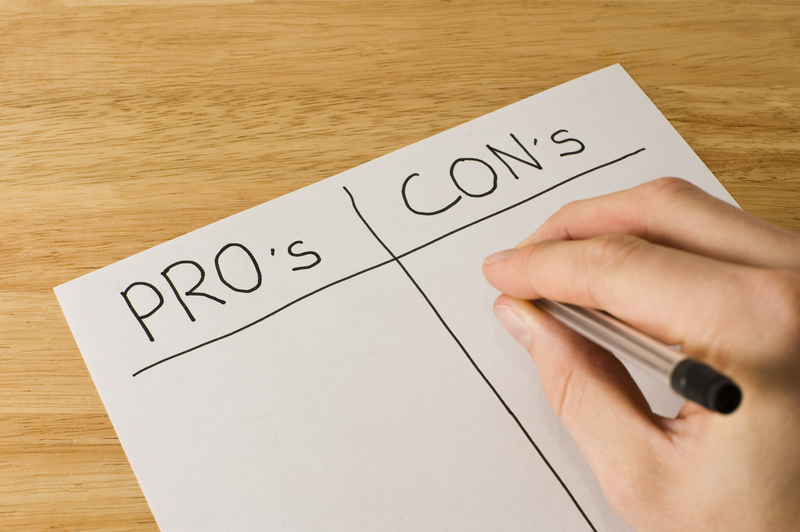Professional Advice for Moving Your Mattress Without Damage
Posted on 08/06/2025
Professional Advice for Moving Your Mattress Without Damage
Relocating to a new home is an exciting adventure, but handling your possessions--especially bulky and delicate items like mattresses--can be daunting. A quality mattress represents a significant investment in your sleep and well-being. Damaging it during a move can be costly and inconvenient. That's why we've compiled this comprehensive guide on professional advice for moving your mattress without damage. Whether you're moving across town or cross-country, follow these expert steps to ensure your mattress arrives in perfect condition.

Why Protecting Your Mattress During a Move Is Crucial
Your mattress's lifespan and comfort largely depend on its condition. Improper handling can lead to tears, stains, deformed springs, and compromised support structures. Transporting it safely not only extends its usability but also ensures you enjoy restful nights in your new space from day one.
- Mattresses are susceptible to tearing, bending, and moisture damage.
- Damage can void warranties or require an expensive replacement.
- Dust and dirt accumulation during transit decreases hygiene.
- Deformation affects sleep quality, leading to physical discomfort.
1. Choose the Right Moving Supplies for Your Mattress
An essential first step in protecting your mattress during a move involves securing the proper packing materials. Here's what the professionals recommend:
- Mattress Bag: Invest in a heavy-duty plastic mattress bag. These are specially designed to shield against dust, dirt, moisture, and pests.
- Moving Blankets: Add an extra layer of protection against bumps and scrapes in the moving vehicle.
- Packaging Tape: Use strong tape to securely seal the mattress bag and keep it closed throughout the journey.
- Ratchet Straps or Ropes: Stabilize the mattress and avoid unnecessary shifting during transport.
- Cardboard Sheets: Insert on both sides for extra support if your mattress is particularly heavy or fragile.
2. Clear and Prepare the Path for Safe Mattress Transport
One of the most common causes of mattress damage during a move is navigating through doorways, stairs, or tight corners. Preparation is key-take these professional steps to avoid snags or drops:
- Measure your mattress and all doorways, staircases, and hallways it must pass through.
- Remove obstacles: Clear clutter, rugs, and furniture from the pathway.
- Open doors wide or even temporarily remove them for tight squeezes.
- Lay moving blankets along walls or corners to soften any accidental bumps.
3. Clean and Protect Your Mattress Before Packing
Cleaning your mattress before a move not only preserves its hygiene but also prevents odors and stains from setting in during transit. Follow these steps for mattress protection:
- Vacuum both sides: Remove dust, debris, and mites with a vacuum cleaner equipped with an upholstery attachment.
- Spot-clean stains: Gently treat any spills or marks with a mild detergent and allow the area to dry thoroughly.
- Deodorize: Lightly sprinkle baking soda for at least 30 minutes before vacuuming to absorb lingering odors.
Once clean and dry, immediately put your mattress in the mattress bag and seal it thoroughly to prevent moisture and dirt from entering.
4. Learn the Proper Way to Move a Mattress: Carrying and Lifting Techniques
Because mattresses are awkwardly shaped and heavy, improper lifting can cause both personal injury and mattress damage. Use safe, professional moving techniques:
- Never fold unless permitted: Some foam mattresses can be gently folded for short periods, but many cannot. Check manufacturer guidelines. Never fold an innerspring or hybrid mattress.
- Team up: Mattresses are best carried by two people, one at each end, to distribute the weight and maintain structural integrity.
- Lift with your legs, not back: Protect your body and keep the mattress from dragging along the ground.
- Keep it vertical: Professionals recommend moving most mattresses on their side to fit through tight spaces and maintain support.
5. Transporting Your Mattress: Vehicle Selection and Loading Tips
Choosing the right vehicle is essential for keeping your mattress safe. Here are professional tips to prevent damage during transit:
- Enclosed vehicle: Always use a box truck, van, or enclosed trailer. Avoid transporting atop cars, which exposes the mattress to weather, wind damage, and unsafe driving.
- Lay flat or stand up: Box springs and most innerspring mattresses should lay flat to avoid stress on springs, while certain memory foam models can be transported standing vertically to save space.
- Stabilize: Use ratchet straps or rope to secure your mattress against vehicle walls to prevent it from tipping or sliding.
- Cushion: Place moving blankets under and around the mattress to buffer shocks and avoid direct contact with hard surfaces.
- Never pile heavy items on top: This can compress layers or permanently deform the mattress.
6. Moving Mattresses Up or Downstairs and Through Tight Spaces
Stairs, narrow hallways, and sharp turns are tricky even for professional movers. Here's how to minimize risk:
- Use handles: Mattress carrying straps--available from moving supply retailers--can give you better grip and leverage.
- Communicate: Move in sync with your partner, especially around blind corners or doorways.
- Angle effectively: For tight bends, stand the mattress on its side and "walk" it through, rotating slowly as needed.
- Rest as required: Don't rush. Stop and set the mattress down if you need to reposition or rest.
7. Unpacking and Setting Up: Ensuring Your Mattress Remains Damage-Free
Once you arrive, don't rush the unpacking process. Take care to ensure your mattress stays clean and undamaged during setup:
- Clean the new space: Remove dirt or debris that could transfer onto your mattress.
- Check for dampness: Place the mattress away from potentially wet areas or freshly cleaned carpets until completely dry.
- Remove plastic bag only when room is ready to avoid dust and exposure.
- Let the mattress breathe: Air it out by removing the bag and letting it rest before placing bedding on top, especially if it was compressed or wrapped tightly.
- Inspect for damage: Thoroughly check for tears, indents, or staining before using it. Address any issues immediately to avoid warranty complications.
8. Tips for Moving Specific Mattress Types
Not every mattress is created equal--some require special consideration during a move. Here's a rundown of professional advice for the most common types:
- Memory Foam: Heavy and flexible, often can be gently bent for short periods (consult manufacturer). Avoid sharp folds to prevent cracks or creases.
- Innerspring: Should remain flat when possible. Never bend sharply; risk of damaging springs and internal structure.
- Box Spring/Foundation: Move flat and handle with care--frames can be fragile and crack under pressure.
- Hybrid: Treat with extra caution--combine properties of foam and coil support so improper moving can compromise both layers.
- Latex: Slightly more resilient to bending, but still best moved flat and shielded from moisture and heat.
- Adjustable or Split Mattresses: Separate all components (base, electrical cords) and move each part with proper support and padding.
9. Common Mattress Moving Mistakes to Avoid
Based on industry experience, here's what not to do when moving your mattress:
- Dragging the mattress: Rips the fabric and can affect internal components.
- Carrying solo: Increases risk of dropping or injuring yourself and damaging the mattress.
- Using open vehicles: Exposure to rain, wind, and dirt causes irreversible damage.
- Improper wrapping: Wrapping in thin plastic or using no protection at all allows contaminants and moisture in.
- Ignoring manufacturer's advice: Each mattress type has specific handling recommendations--disregard can void your warranty.
10. When Should You Hire Professional Mattress Movers?
While it's possible to move your mattress yourself with careful planning and the right tools, sometimes the wisest course is to bring in the professionals. Consider hiring pro movers if:
- You own a large, heavy, or expensive mattress.
- You have to navigate multiple stairs or narrow spaces.
- Time is limited, or you lack help.
- Your physical strength or health may be compromised.
- You want peace of mind knowing your investment is protected.
Professional movers are equipped with the manpower, expertise, and equipment to ensure your mattress survives the journey undamaged.
Frequently Asked Questions About Moving Mattresses Without Damage
Can I move a mattress on my car roof?
It's strongly not recommended. Moving a mattress on the roof of a car exposes it to wind, rain, and debris, risking significant damage or loss. Most car roofs also cannot secure a mattress safely at speed, making it both dangerous and potentially illegal.
How do I store my mattress short-term during a move?
Place in a climate-controlled storage unit, inside a high-quality mattress bag, and lay it flat on a clean, dry surface. Avoid stacking heavy objects on top.
Can all mattresses be folded to fit through small spaces?
No. Only some foam or latex mattresses can tolerate gentle folding for short times. Never attempt to fold an innerspring or box spring, as this can cause irreversible structural damage.

Key Takeaways: How to Move Your Mattress Without Damage
- Invest in proper supplies--mattress bags, moving blankets, straps, and tape.
- Clean, dry, and wrap your mattress securely before moving.
- Measure tight spaces and clear a safe path in advance.
- Always use two people to carry and avoid folding unless manufacturer approved.
- Use an enclosed vehicle and stabilize the mattress during transit.
- Store and unpack with care, checking for any signs of damage before use.
- When in doubt, seek professional mattress moving services to safeguard your investment.
Conclusion: Secure, Stress-Free Mattress Moving
Moving your mattress can be a straightforward process with the right preparation and guidance. By following this professional advice for moving your mattress without damage, you'll protect your investment, safeguard your health, and ensure restful sleep in your new home. Always prioritize quality packing materials, enlist assistance, avoid shortcuts, and treat the mattress with the same care and respect you'd give to any other valuable possession. For the most challenging moves, don't hesitate to hire experienced movers--they'll guarantee your comfy nights continue, wherever you go.







